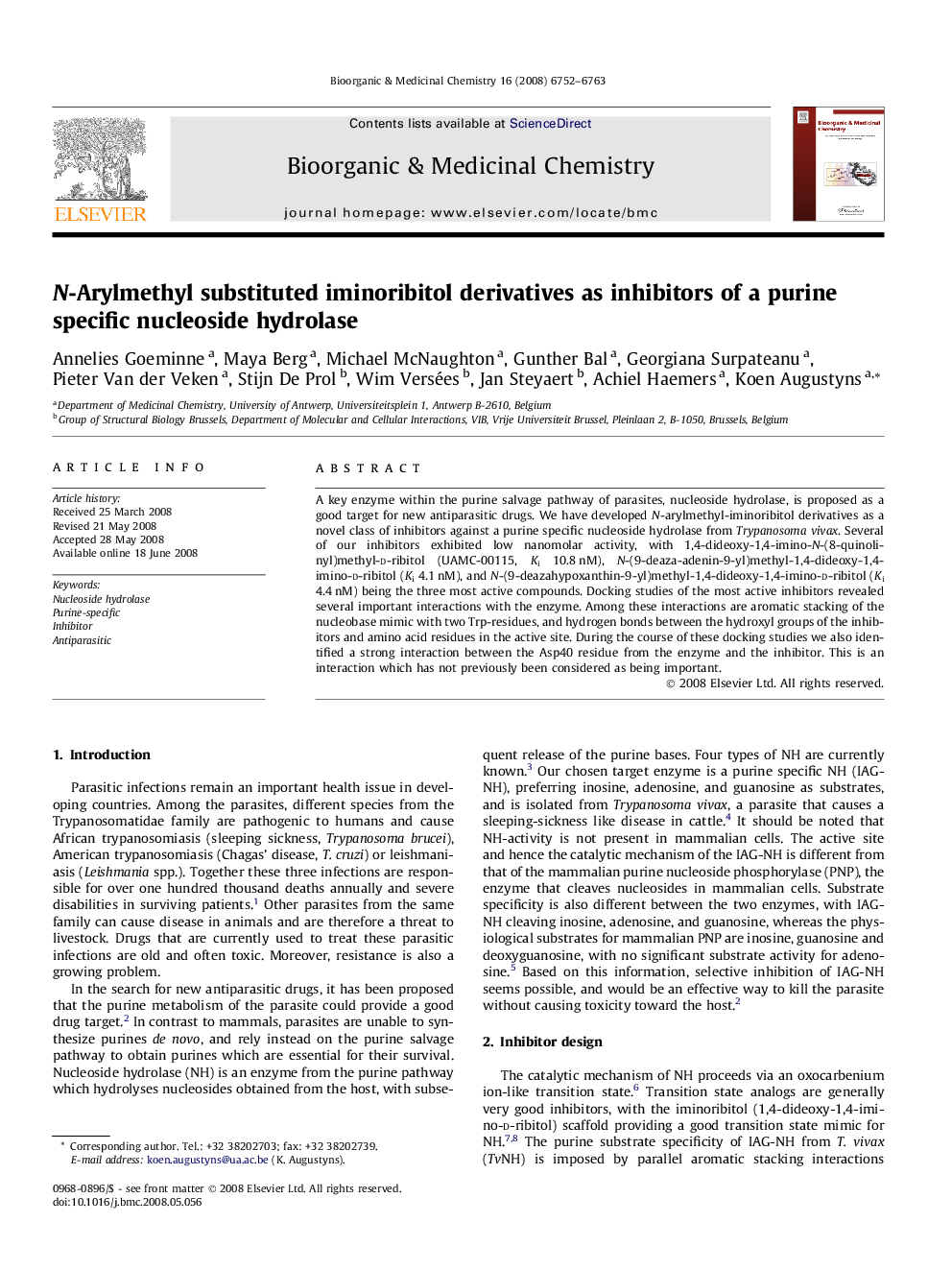| کد مقاله | کد نشریه | سال انتشار | مقاله انگلیسی | نسخه تمام متن |
|---|---|---|---|---|
| 1361342 | 981461 | 2008 | 12 صفحه PDF | دانلود رایگان |

A key enzyme within the purine salvage pathway of parasites, nucleoside hydrolase, is proposed as a good target for new antiparasitic drugs. We have developed N-arylmethyl-iminoribitol derivatives as a novel class of inhibitors against a purine specific nucleoside hydrolase from Trypanosoma vivax. Several of our inhibitors exhibited low nanomolar activity, with 1,4-dideoxy-1,4-imino-N-(8-quinolinyl)methyl-d-ribitol (UAMC-00115, Ki 10.8 nM), N-(9-deaza-adenin-9-yl)methyl-1,4-dideoxy-1,4-imino-d-ribitol (Ki 4.1 nM), and N-(9-deazahypoxanthin-9-yl)methyl-1,4-dideoxy-1,4-imino-d-ribitol (Ki 4.4 nM) being the three most active compounds. Docking studies of the most active inhibitors revealed several important interactions with the enzyme. Among these interactions are aromatic stacking of the nucleobase mimic with two Trp-residues, and hydrogen bonds between the hydroxyl groups of the inhibitors and amino acid residues in the active site. During the course of these docking studies we also identified a strong interaction between the Asp40 residue from the enzyme and the inhibitor. This is an interaction which has not previously been considered as being important.
N-Arylmethyl-iminoribitols were developed and tested as inhibitors against a purine specific nucleoside hydrolase from Trypanosoma vivax.Figure optionsDownload as PowerPoint slide
Journal: Bioorganic & Medicinal Chemistry - Volume 16, Issue 14, 15 July 2008, Pages 6752–6763